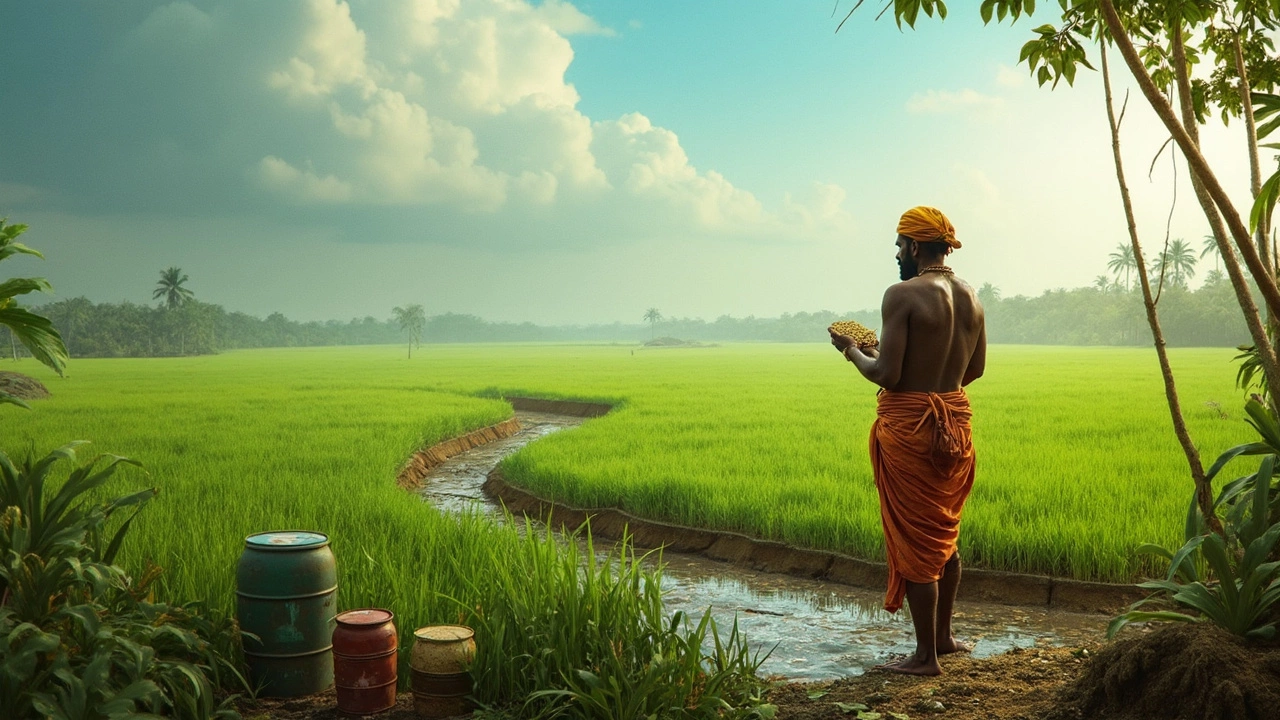Rice is a staple food for billions, but it comes with some hidden problems. From environmental impacts to health concerns, growing and eating rice isn't always as simple as it seems. This article breaks down the main drawbacks of rice and gives you tips to deal with them. You'll learn about water usage, chemical exposure, nutritional gaps, and more. If you grow rice or eat it often, you’ll want to know what’s going on behind the scenes.
Rice Environment: What It Takes to Grow Rice Successfully in India
When you think of rice environment, the specific conditions needed for rice to grow, including water, soil, temperature, and seasonal timing. Also known as rice cultivation system, it isn't just about planting seeds—it's about managing water like a resource, not a luxury. In India, where rice feeds over half the population, this environment isn’t random. It’s shaped by monsoons, clay-rich soils, and generations of farmers who learned that rice doesn’t just grow—it demands a rhythm.
A good rice environment, the specific conditions needed for rice to grow, including water, soil, temperature, and seasonal timing needs three things: plenty of water, warm temperatures, and heavy soil. You won’t find rice thriving in sandy desert land or cold hilltops. It needs fields that hold water, like natural ponds. That’s why most rice in India grows in the eastern and southern plains, where the monsoon fills the land for months. Farmers flood their fields not because they’re wasteful, but because water keeps weeds down, cools the roots, and feeds nutrients into the soil. This isn’t just tradition—it’s science. Research from the Indian Council of Agricultural Research shows that rice yields drop by up to 40% when water is inconsistent, even for just a week.
Then there’s the soil for rice, the type of soil that retains water and nutrients best, typically clay or silty clay. It’s not about being rich in organic matter like vegetable garden soil. Rice soil is dense, almost sticky when wet, and cracks when dry. That’s actually good. It traps water like a bowl. Adding compost helps, but you don’t need to loosen it like you would for tomatoes. In fact, too much aeration kills rice roots. The right water requirements for rice, the amount and timing of water needed during different growth stages, typically 500–1500 mm per season change as the plant grows. Young plants need shallow water—just a few inches. But when it starts flowering, it needs deeper flooding. And just before harvest? You drain it all. Get this wrong, and you get empty grains or rotting roots.
Temperature matters too. Rice won’t grow well below 20°C. It loves heat—between 25°C and 35°C. That’s why northern India grows rice in summer, after the rains start. In the south, farmers grow two or even three crops a year because the warm season lasts longer. This isn’t just about planting dates. It’s about matching the crop’s needs to the land’s natural cycles. And while some talk about perennial rice as the future, right now, every single grain comes from a plant that’s been planted, grown, and harvested in under six months. There’s no magic. Just careful timing, smart water use, and soil that holds on tight.
What you’ll find below are real, practical guides from farmers and gardeners who’ve dealt with flooded fields, clogged drains, and failed crops. They’ll show you how to fix poor drainage, pick the right time to plant, and understand why your rice might be turning yellow. No theory. No fluff. Just what works in Indian conditions.
